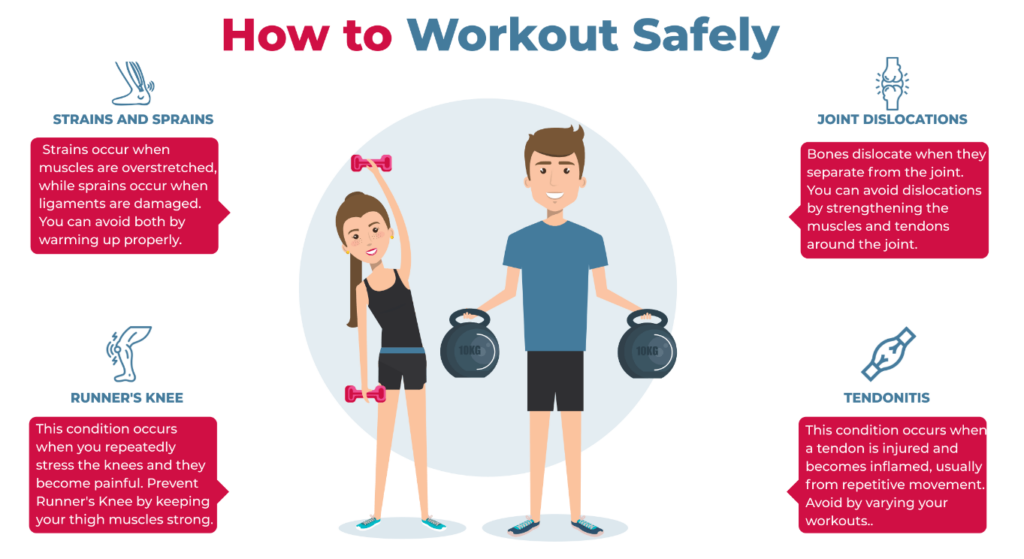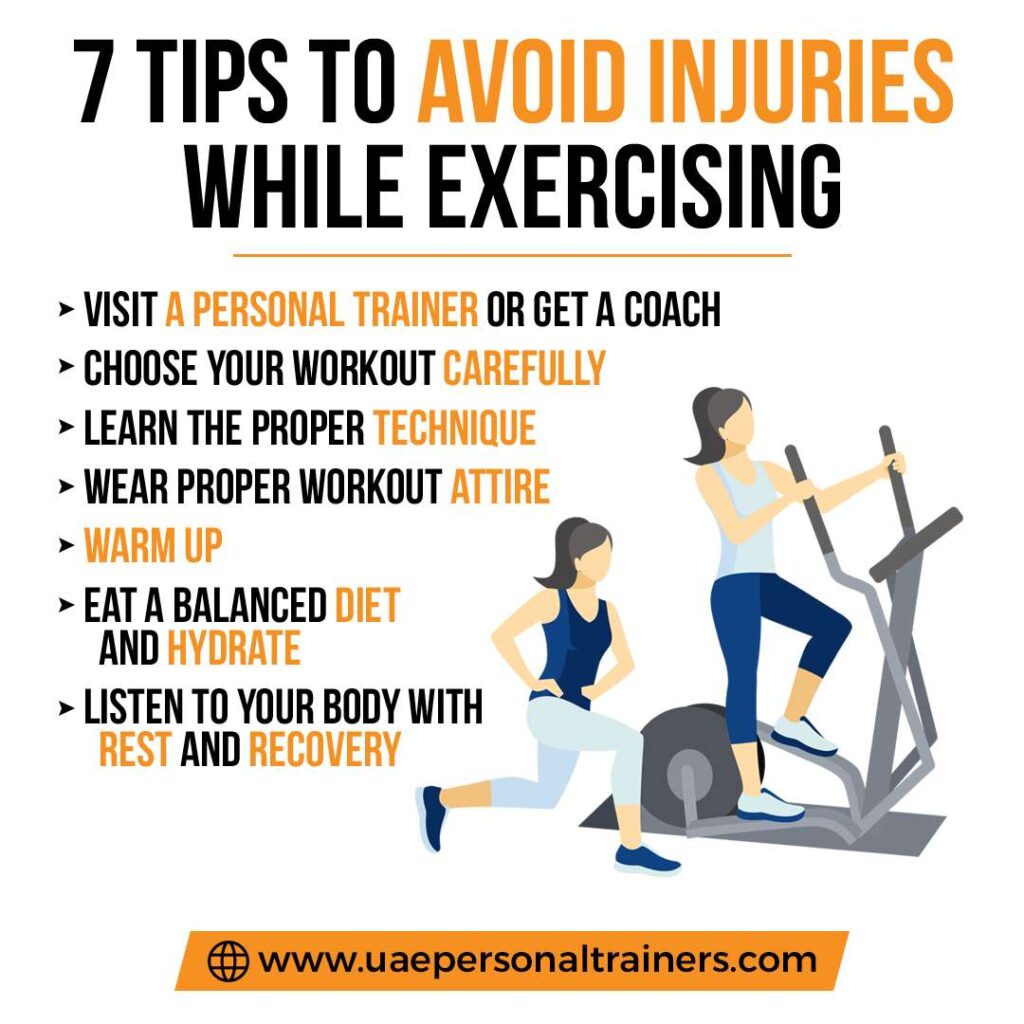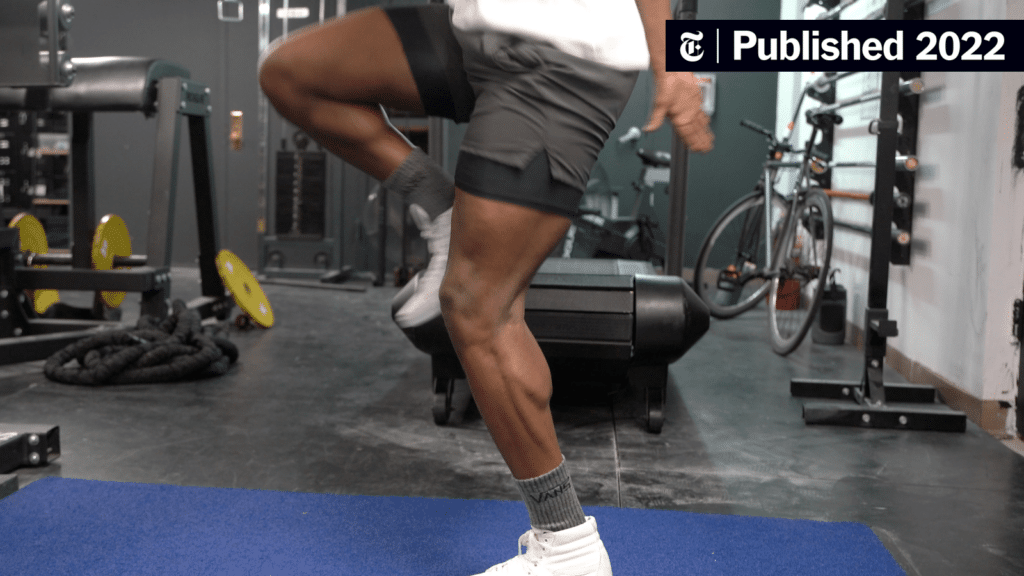
Tips About How Can I Prevent Injuries While Working Out At A Health Club?
Have you ever wondered how to prevent injuries while working out at a health club? Whether you’re a fitness enthusiast or just starting, ensuring your workouts are safe and injury-free is crucial to your long-term health and progress. Injuries can be frustrating, setting you back in your fitness journey and potentially leading to chronic issues. But don’t worry; with the proper knowledge and precautions, you can minimize the risk of getting hurt and enjoy a safer workout experience.

Understanding the Importance of Proper Warm-Up and Cool-Down
Preparing your body adequately before you start your workout routine is essential. A proper warm-up helps increase your heart rate and blood flow to the muscles, making them more flexible and ready for the workout.
The Benefits of Warming Up
Warming up before your workout can help in multiple ways:
- Increases Blood Flow: Enhanced circulation prepares your muscles for strenuous activity.
- Improves Range of Motion: Dynamic stretching can increase the flexibility of your muscles and joints.
- Reduces Muscle Stiffness: Loosening up tight muscles can decrease the chances of strains and sprains.
Steps for a Proper Warm-Up
Consider these steps for an adequate warm-up:
- Light Cardiovascular Exercise: Engage in 5-10 minutes of light biking or jogging.
- Dynamic Stretching: Perform leg swings, arm circles, and torso twists.
- Gradual Exercise Progression: Slowly increase the intensity of your workout.
The Importance of Cooling Down
Just as warming up prepares your body for exercise, cooling down helps it return to a resting state. This process helps to prevent stiffness and soreness by gradually lowering your heart rate and reducing muscle tension.
Cooling Down Techniques
Effective cool-down methods can include:
- Light Aerobic Activities: Walking or light jogging for 5-10 minutes.
- Static Stretching: Hold stretches for 15-30 seconds to promote muscle relaxation.
- Hydration and Nutrition: Replenish lost fluids and nutrients after your workout.
Utilizing Proper Form and Technique
One of the primary causes of injury at the health club is poor exercise form and technique. Whether lifting weights or performing cardiovascular exercises, maintaining the correct posture and movements is essential.
Understanding the Importance of Proper Form
Using the proper form can protect you from injuries by ensuring that you’re not placing undue stress on your joints and muscles. Moreover, it maximizes the effectiveness of your workout, helping you achieve your fitness goals more efficiently.
Guidelines for Maintaining Proper Form
Here are some essential tips to follow:
- Start with Lighter Weights: To master the correct form before moving on to heavier weights, begin with a weight appropriate for your fitness level.
- Focus on Body Alignment: Keep your back straight, shoulders relaxed, and core engaged.
- Controlled Movements: Avoid jerky or rapid movements; aim for slow, controlled motions instead.
Consulting Professionals
If you need more clarification on your form, please feel free to consult,” a fitness trainer or specialist. They can provide personalized feedback and adjustments to ensure you are exercising safely.
Incorporating Rest and Recovery
Rest and recovery are often overlooked aspects of fitness but are just as important as the workouts themselves. Overtraining can lead to fatigue and injuries, undermining hard work.
The Role of Rest Days
Rest days allow your muscles to repair and grow. Aim for at least one or two rest days per week depending on the intensity and frequency of your workouts.
Active Recovery
Active recovery involves low-intensity activities like walking, swimming, or yoga. These activities can promote blood flow and help muscle recovery without putting additional stress on your body.
Quality Sleep
Sleep is an essential component of recovery. Aim for 7-9 hours of quality sleep per night to help your muscles recover and your body function optimally.
Listening to Your Body
Understanding your body’s signals is crucial to preventing injury. Pain, fatigue, and soreness are ways your body tells you something might be wrong.
Differentiating Between Good and Bad Pain
There’s a fine line between muscle soreness from a good workout and pain that signals injury. Good pain is usually dull, mild discomfort that fades after a day or two, whereas bad pain is sharp, persistent, and often worsens with activity.
When to Seek Medical Advice
If you experience severe pain or discomfort that doesn’t go away, it’s essential to consult a healthcare professional. Ignoring potential injuries can lead to long-term damage.

Using Appropriate Equipment
Having the appropriate gear and equipment is vital for a safe workout. Ill-fitting shoes, improper attire, or faulty gym equipment can increase the risk of injuries.
Choosing the Right Footwear
Proper footwear provides support and cushioning, reducing strain on your feet and joints. Make sure your shoes fit well and are appropriate for the type of exercise you’re doing.
Wearing Suitable Attire
While it might seem minor, wearing the proper clothing can affect your performance and safety. Opt for moisture-wicking fabrics that fit comfortably but aren’t too loose or restrictive.
Checking Gym Equipment
Before using any equipment, ensure it’s in good condition. Check for any signs of wear and tear and report faulty machines to gym staff immediately.
Using Personal Protective Equipment
For specific exercises, especially those involving heavy weights, consider using protective gear like weightlifting belts or wrist straps to provide additional support.
Staying Hydrated and Nourished
Proper hydration and nutrition are vital for peak performance and injury prevention.
Importance of Hydration
Dehydration can lead to muscle cramps, dizziness, and fatigue, increasing the risk of injury. To stay hydrated, drink water before, during, and after your workout.
Nutritional Guidelines
A balanced diet of proteins, carbohydrates, and fats supports energy levels and muscle repair. Consider pre- and post-workout snacks like a banana with peanut butter or a protein shake to fuel your workouts.
Supplements
If your diet lacks certain nutrients, please consider supplements, but consult a healthcare provider to ensure they are appropriate.

Creating a Balanced Workout Plan
A balanced exercise approach targets all major muscle groups and includes a mix of cardiovascular, strength, and flexibility training.
Importance of Variety
Engaging in various exercises ensures that every particular muscle group is well-rested, reducing the risk of injury.
Cardiovascular Exercises
Cardio activities like running, cycling, or swimming improve heart health and endurance. Aim for at least 150 minutes of moderate-intensity cardio per week.
Strength Training
Strength training builds muscle mass and bone density, which can help prevent injuries. Incorporate exercises like squats, deadlifts, and bench presses, ensuring a balanced approach by working all major muscle groups.
Flexibility and Mobility
Flexibility exercises, such as yoga or Pilates, improve range of motion and reduce muscle stiffness. Allocating time for stretching exercises after workouts is essential to maintaining flexibility.
Sample Weekly Workout Plan
Here’s a sample plan to provide a balanced approach:
| Day | Activity | Focus |
|---|---|---|
| Monday | Cardio (running or cycling) | Cardiovascular |
| Tuesday | Strength Training (upper body) | Muscle building |
| Wednesday | Flexibility (yoga or stretching) | Flexibility and mobility |
| Thursday | Cardio (swimming or brisk walking) | Cardiovascular |
| Friday | Strength Training (lower body) | Muscle building |
| Saturday | Active Recovery (light exercise) | Recovery and mobility |
| Sunday | Rest Day | Complete rest |
Paying Attention to Mental Health
Mental well-being is an often overlooked aspect of physical fitness but is crucial in preventing injuries. Stress and anxiety can affect focus and performance, leading to mistakes and injuries.
Stress Management
Incorporate stress-relief techniques like deep breathing, meditation, or mindfulness exercises into your daily routine. A calm and focused mind improves your workout performance.
Realistic Goals
Could you set achievable fitness goals that align with your capabilities? Unrealistic expectations can lead to overexertion and injuries.

Developing Good Gym Etiquette
Good gym etiquette ensures your safety and the safety of others around you. Practicing basic courtesy and following gym guidelines can create a safer workout environment for everyone.
Wiping Down Equipment
Always wipe down machines and equipment before and after use to prevent the spread of germs and ensure clean, dry surfaces.
Putting Away Weights
Re-rack weights after you’re done to prevent trips and falls and to maintain an organized space for everyone.
Being Aware of Your Surroundings
Keep an eye out for other gym-goers to avoid accidental collisions or disruptions. Always be conscious of your environment and respectful of others’ workout spaces.
Staying Informed and Educated
Educating yourself about fitness, exercise techniques, and health can help prevent injuries. Attend workshops, read articles, and ask questions to expand your knowledge.
Fitness Classes and Workshops
Participate in fitness classes or workshops your health club offers to learn new exercises and techniques. These sessions often provide valuable insights from professionals.
Online Resources
Leverage credible online resources like fitness websites, expert blogs, or YouTube channels to stay updated on the latest fitness trends and safety tips.

By implementing these strategies, you can significantly reduce the risk of injuries and enjoy a more productive and fulfilling workout experience at your health club. Understanding the importance of warm-up and cool-down routines, maintaining proper form, prioritizing rest and recovery, listening to your body, using appropriate gear, staying hydrated and nourished, creating a balanced workout plan, paying attention to mental health, practicing good gym etiquette, and staying informed can make all the difference.
Remember, consistency and safety are the keys to a successful fitness journey. Prioritize your well-being, and you’ll achieve your fitness goals without compromising your health. So, next time you head to the health club, remember these tips, and you’ll be well on your way to a safe and effective workout routine!
==========
Content 10/10/G





